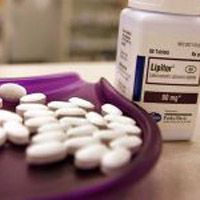Article
One-Third of Statin Patients Fail to Meet Lower LDL-C Threshold
Author(s):
A recent study found that 33.7% of patients on statins fail to lower their LDL-C to the recommended threshold of 100 mg per dL.

A new study has found that 1 in 3 statin patients fail to reach healthy levels of low-density lipoprotein cholesterol (LDL-C).
Through a collaboration between Merck, Regenstrief Institue, Indiana University School of Medicine, and the University of North Carolina at Chapel Hill, investigators found that 33.7% of statin patients examined failed to reach therapeutic levels of LDL-C, which could help prevent more than 1000 cardiovascular disease (CVD) events.
"Statins are first-line therapy in patients with hyperlipidemia because they clearly prevent cardiovascular events," said Robert Boggs, PhD, director of outcomes research, Center for Observational and Real-world Evidence (CORE) at Merck. "This study demonstrates not only the value of helping patients adhere to their statin therapy but, in some cases, the need for additional treatments to get their LDL-Cholesterol down to reasonable thresholds."
In response to previous studies, which suggest only 20% to 64% of patients taking statins achieve a reasonably low LDL-C threshold, investigators sought to determine how many patients actually achieved the therapeutic thresholds and the impact that can have on avoiding cardiovascular events. Investigators carried out the retrospective, longitudinal cohort study by examining electronic health record (EHR) data from the Indiana Network for Patient Care (INPC).
A total of 89,267 patients were identified by investigators. All patients were over the age of 45, were statin-naive for 12 months before the index date of initiating statin-therapy, and had an LDL-C value recorded 6 to 18 months after index date. Additionally, authors noted that theoretical CVD risk reduction was calculated using Framingham Risk Score and Cholesterol Treatment Trialists' Collaboration formulas and estimated potential cost savings used published first-year costs of CVD events.
After analyses, investigators found that 30,083 (33.7%) patients did not achieve the LDL-C threshold of less than 100 mg per dL after 6 to 18 months. Within the high-risk subgroup, 58% failed to meet a more stringent LDL-C threshold of less than 70 mg per dL. In total, 24% of the full population and 51% of the high-risk subgroup did not meet their respective thresholds.
Statin adherence in the general study population was 57.4%. Authors noted that failure to meet the LDL-C threshold was more common among patients who were women, black, and who had reduced medication adherence.
Additionally, investigators determined that reducing LDL-C levels in those who were above the threshold could help avoid 1,173 CVD events over a 10-year period. The reduced risk associated with reaching the threshold would save about $1455 per person over that same 10-year period.
Study authors noted that the results show the implication that there are opportunities to improve cardiovascular care and reduce the cost of treatment with more aggressive therapies for LDL-C. They added they hope future studies can further identify risks and at-risk populations to help prevent additional negative outcomes.
"The presence of the health information exchange in Indiana was a crucial factor in being able to do this study," said Titus Schleyer, DMD, PhD, study author and research scientist at Regenstrief Institute. "The Indiana Network for Patient Care allows us to gather health data from large numbers of people on an ongoing basis. While that information is a byproduct of going to the doctor, it is tremendously useful for research."
This study, titled "Quantifying unmet need in statin-treated hyperlipidemia patients and the potential benefit of further LDL-C reduction through an EHR-based, retrospective cohort study," was published in the Journal of Managed Care & Specialty Pharmacy.





